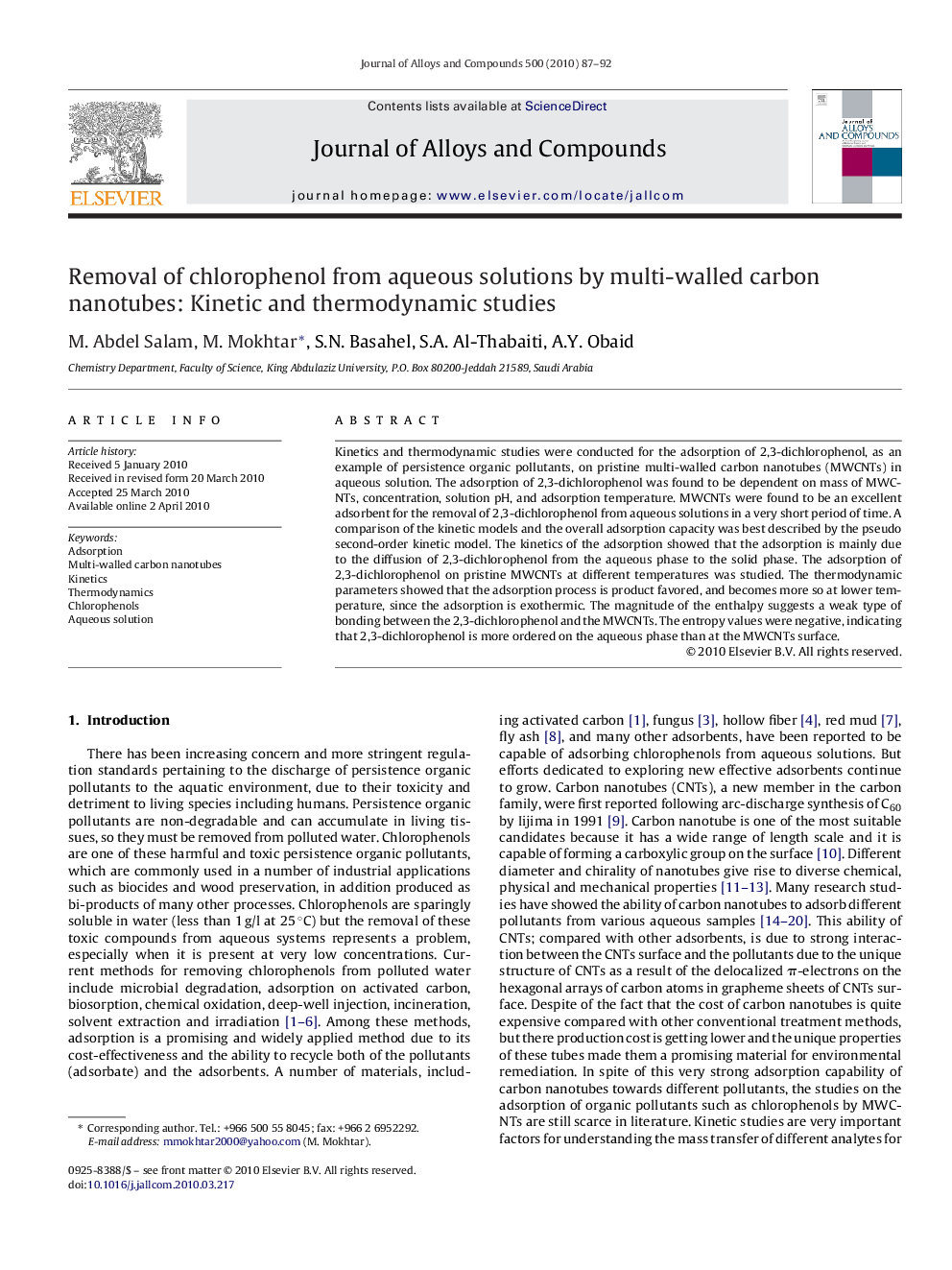| Article ID | Journal | Published Year | Pages | File Type |
|---|---|---|---|---|
| 1620253 | Journal of Alloys and Compounds | 2010 | 6 Pages |
Kinetics and thermodynamic studies were conducted for the adsorption of 2,3-dichlorophenol, as an example of persistence organic pollutants, on pristine multi-walled carbon nanotubes (MWCNTs) in aqueous solution. The adsorption of 2,3-dichlorophenol was found to be dependent on mass of MWCNTs, concentration, solution pH, and adsorption temperature. MWCNTs were found to be an excellent adsorbent for the removal of 2,3-dichlorophenol from aqueous solutions in a very short period of time. A comparison of the kinetic models and the overall adsorption capacity was best described by the pseudo second-order kinetic model. The kinetics of the adsorption showed that the adsorption is mainly due to the diffusion of 2,3-dichlorophenol from the aqueous phase to the solid phase. The adsorption of 2,3-dichlorophenol on pristine MWCNTs at different temperatures was studied. The thermodynamic parameters showed that the adsorption process is product favored, and becomes more so at lower temperature, since the adsorption is exothermic. The magnitude of the enthalpy suggests a weak type of bonding between the 2,3-dichlorophenol and the MWCNTs. The entropy values were negative, indicating that 2,3-dichlorophenol is more ordered on the aqueous phase than at the MWCNTs surface.
